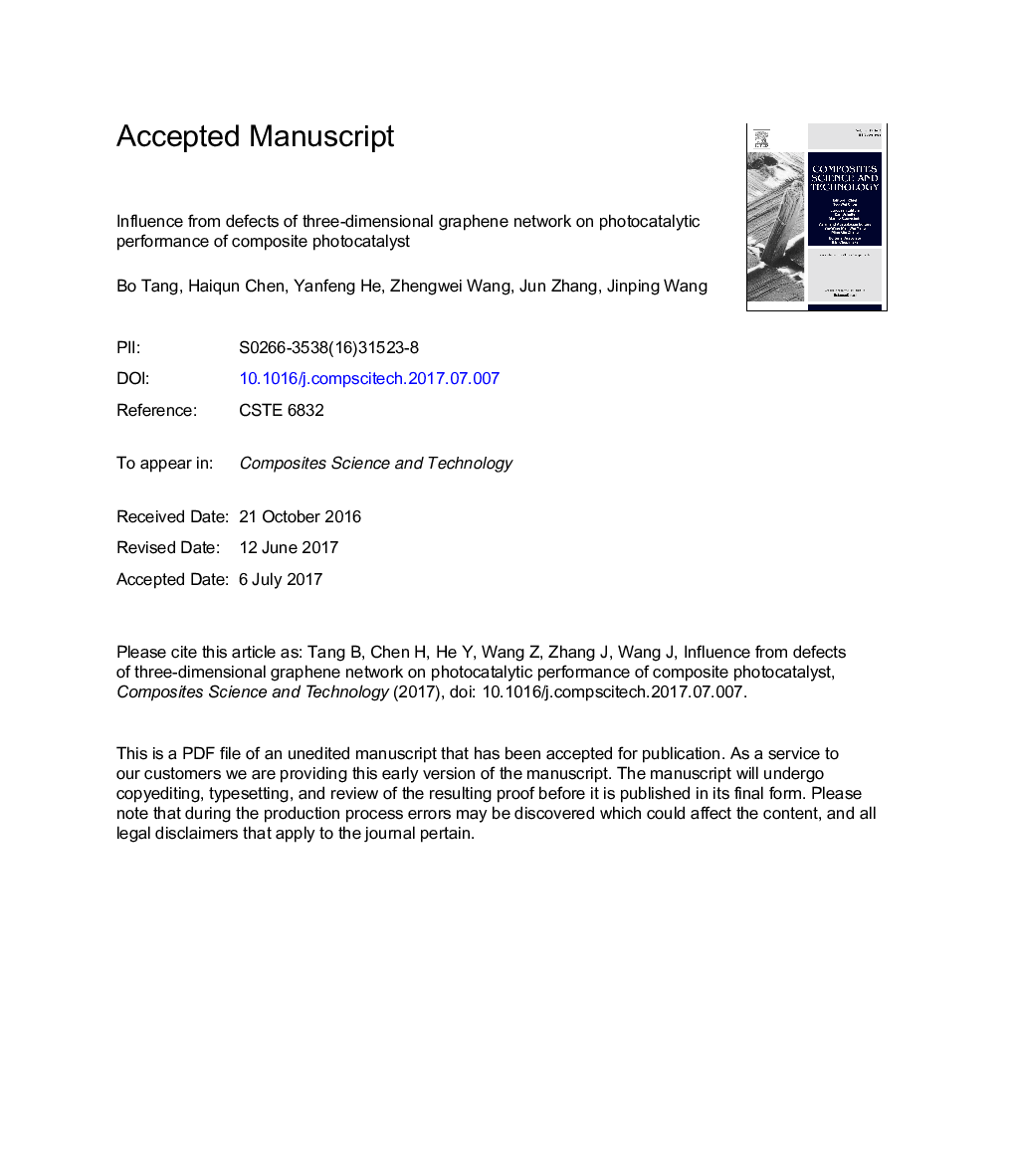| Article ID | Journal | Published Year | Pages | File Type |
|---|---|---|---|---|
| 5022009 | Composites Science and Technology | 2017 | 31 Pages |
Abstract
Three-dimensional graphene networks (3DGN) with various defect densities prepared by chemical vapor deposition method are adopted to modify TiO2 for high photocatalytic performances. Based on the obtained decomposition rate constants of phenol and Rhodamine-B, the photocatalytic activities of the resulting composite photocatalysts are found closely related to the defect density of the adopted 3DGN, which is proven by the electron paramagnetic resonance spectroscopy and tunneling electron microscope. It is revealed that the surface defects of the 3DGN can play as active sites to effectively adsorb pollutants, which is the key premise for the following decomposition process. Moreover, these defects further play as a bridge to achieve a close contact between the 3DGN and TiO2, enhancing electron transport ability between them. By adopting the 3DGN with a moderate defect density, photocatalytic performance of the resulting photocatalyst is significantly enhanced under both UV- and visible-light illumination, demonstrating that optimizing the employed 3DGN is an effective approach to enhance the photocatalytic activity of TiO2.
Related Topics
Physical Sciences and Engineering
Engineering
Engineering (General)
Authors
Bo Tang, Haiqun Chen, Yanfeng He, Zhengwei Wang, Jun Zhang, Jinping Wang,
